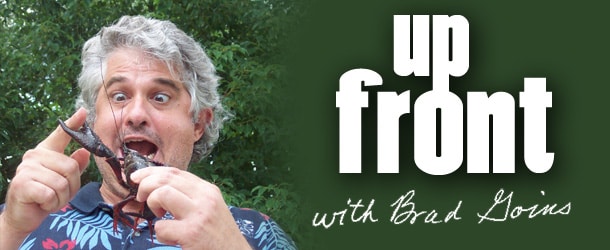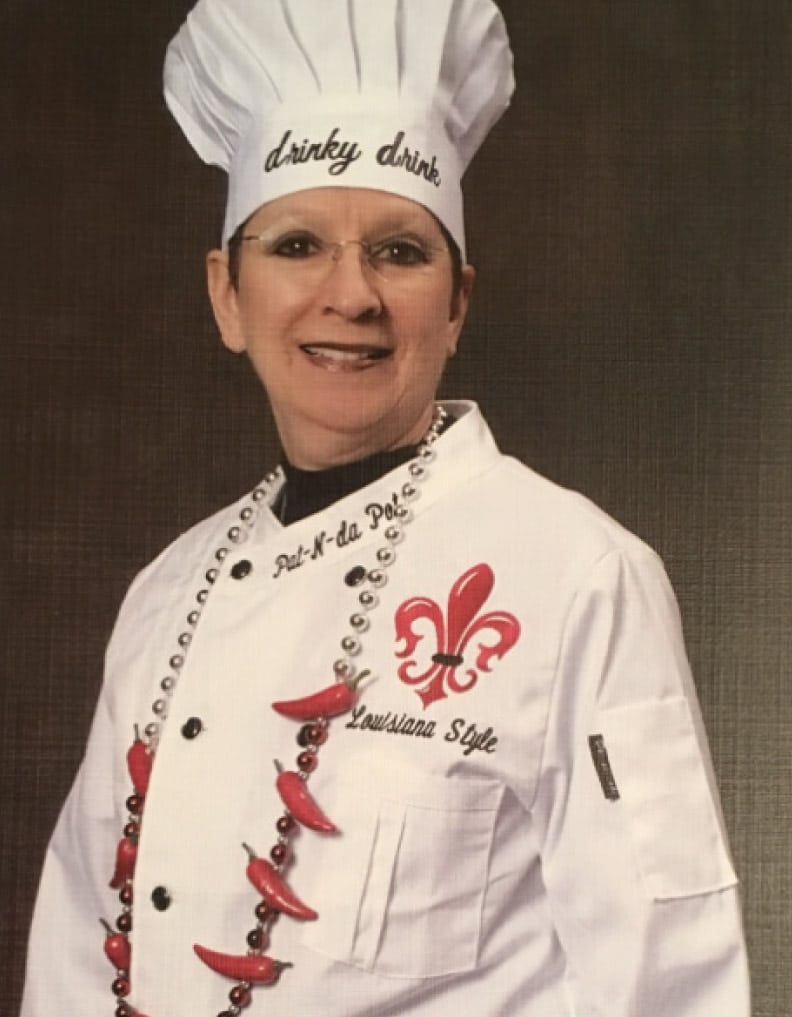Jennifer Reeser is one of the products of McNeese’s much-lauded master’s poetry program who’s managed to gain a great deal of recognition by writing verse. Her poetry has been published in the big journals, such as Poetry and The Hudson Review. X.J. Kennedy stated she should win the Pulitzer Prize; she’s been nominated seven times for the prestigious Pushcart Prize.
Reeser is the featured poet in the Spring 2018 issue of the arts periodical IthicaLit.
A Louisiana native, Reeser is the result of a mixture of Anglo-Celtic and Native American Indian ancestry. The majority of her poems in this issue of IthicaLit are about problems that come with living in the contemporary U.S. when one is of Native American descent.
Reeser uses carefully metered and rhymed verse to depict the ways in which cliched and belittling images of Native Americans are used to sell tobacco; how Americans who are of Cherokee descent may prefer to think they are part of a tribe they find more with it, such as (in this area) Coushatta; and (in “Coushatta Co-Ed”) how Coushatta descendants wear out Coushatta paraphernalia without knowing anything about the tribe’s history or culture or traditions.
And then there’s the big problem of the extremely high incidence of rape of American Indian women in the U.S. as recently reported by the U.S. Justice Dept. In “Not Mary,” the poem’s narrator watches a Cherokee woman who seems to be threatened by a “predator” in a parking lot in Tulsa at 1 am. A passage reads:
“What is it, that this rare ethnicity
We share, should be so hunted, still, so marked
By every predator prowling near and far?
His cowboy hat pulled low, I see him parked —
As mine was — waiting in his red-skinned car,
Beneath approved Security’s white light.
Sister of my sister — what we are
Is savages’ distraction for a night.”
The words “as mine was” indicate the narrator was once accosted, perhaps raped, by a predator such as the one she now sees in the parking lot. His car is “red-skinned” — a reference to a cliched American term for a Cherokee. The capitalization of the word “Security” points out that the light doesn’t bring security to some (assuming it brings security to anyone at all). And of course, in the last line of the selection, Reeser reverses the old, stereotypical use of “savage” to describe Native Americans so that it now describes those who abuse them.
Reseer also provides her translation of a traditional Chippewa Native American lyric and translations of two Papago Native American lyrics, one of whose beautiful lines I’d like to quote in full:
Song of the Women by the Sea
“From where have I been running, that I approach this place?
“Am I a crazy woman, who bears a painted face?”
To read Reeser’s featured poetry in full, go to ithacalit.com. Go to the list in the left hand margin. Click the first entry — “Jennifer Reeser” — to see the poet’s bio. Click the second item — “Featured poetry” — to see her work.
Pat-N-Da Pot
Lake Charles resident Pat Darbonne has a local TV cooking show and she’d like Lake Area residents to know about it. So the Up Fronter is lending a hand.
The show, which airs on KLOC-TV, is called Pat-N-Da Pot. It’s about Pat’s “down-home” approach to Creole cooking. I tuned in for an episode on chicken and spinach in parmesan sauce.
Pat has her TV schtick down. When she talked to her TV assistant — her grandson Buggy — she said, “I got my little Buggy back with me. We gonna get our little drinky drink on.” Pat took a sip from a healthy glass of red wine, while Buggy enjoyed his Dr. Pepper.
Pat has a Creole accent, but not an overpowering one. I had no trouble understanding what she was saying.
I very much like the fact that after her little “drinky drink,” she showed Buggy how to cut tomatoes. (She was really showing him how to dice tomatoes.) I appreciate the idea of a cooking show host who doesn’t assume everyone knows the techniques of cooking. (Darbonne got extra points for twice telling Buggy to be careful not to cut his fingers. Good work.)
I’m certainly no expert on cooking shows. But this one seemed fine to me. The camera work was sharp; I could see all the ingredients clearly. Pat went at a nice steady pace. There was no getting lost in a complex, hastily described list of ingredients and instructions.
I probably wouldn’t watch this program if I weren’t reviewing it (although I think I will watch the episode on ox-tails; I love them and hardly ever get to eat them). But the show held my attention. It’s certainly more interesting than 90 percent of the stuff I’ve seen on TV during my fairly long life.
You can watch Pat-N-Da Pot at 8 pm on Suddenlink channel 4 local access. There are reruns every night at the same time and channel. With each Thursday, there’s a new episode.
If you want to watch old episodes on YouTube, search for “Pat-N-Da Pot Creole Cookin.” Recipes so far include liver and onions, grouper courtbouillon, shrimp and grits and smothered pork chops.
An Element Of Danger
With the advent of the Trump era, the culture of lower class or underclass rural white Americans has received unprecedented attention. One of the most detailed depictions of this culture is on display right now in Beaumont. The exhibit “Shaun Roberts: Rebels and Renegades” will hang through June 3 at the Art Museum of Southeast Texas (AMSET).
The world Roberts documents in his painting is one of bikers, motorcycles, beer, tattoos, gimme caps, unbuttoned shirts and guns, guns and more guns. Some of Roberts’ subjects are so weighed down with guns and knives they have a darkly comic look.
In a representative painting, an old biker with a long gray beard cleans his gun as a baby sits in a baby chair perhaps two feet away from him. In front of both figures are two empty beer cans and one half-full bottle. A poster of a biker on a chopper adorns the wall behind the infant.
Roberts lives in Nacogdoches, Texas, where he works as assistant professor of painting at Stephen F. Austin State University.
In 2016, Roberts talked a little bit about his work to the arts blog Scenes. After Roberts notes that “most of [his] paintings are full of chaos,” the Scenes interviewer says, “The world you depict is pretty rough. Can you tell us a little about why you depict this world? Is life scary?”
To this, Roberts responds, “life can be scary, and we all have been in uncomfortable situations. I like to put the viewer in a slightly uncomfortable place to bring tension to the artwork. At the same time, I like to throw in humor to balance the scales. My characters are often irresponsible or unaware of the danger lurking beneath the comedic surface.”
He makes particular note of Flannery O’Connor’s stories of the gothic south. “At first, many of [her] stories seem to be just down to earth Americana with everyday situations and characters. The stories draw you in. But as you grow close to these characters, you start to realize there is something off; that things are not quite as they seem. There is always an element of potential danger …”
But Roberts doesn’t feel in any way that his work is essentially negative. “I have a wide audience. Some still feel uneasy [when they see my work], but some relate to the paintings on a personal level and are full of joy and excitement when they see them. Both reactions are OK.”
The exhibit will be accompanied by a gallery guide with a critical essay by Jill Carrington, professor of art history at Stephen F. Austin. You’ll find the museum at 500 Main St. in Beaumont. Gallery hours are M-F 9 am-5 pm and Sat. 10 am-5 pm. The show is free to the public. Need more info? Call 409-832-3432.
Calls For Artists
The local ALA Gallery by the Lake is making several calls for artists. The calls are for traditional and digital two-dimensional visual art.
The call for the exhibit “Through My Eyes” states that “as all artists see from different perspectives, this show is all about showing off your best works.” Entrants, who should be 18 or older, can place up to three entries for $25. Best in show earns a $500 award; first place is $300. Deadline entry is June 4.
Another “Through My Eyes” exhibit is for 7th-12th graders, who enter for free. Best in show earns a $300 award; first place is $200. Deadline entry is June 4.
The exhibit “Hit Me With Your Best Shot” will showcase the bird flyway environments of the Gulf Coast. Categories are Birds In Motion, A Learning Moment and Fine Art. Fees are $35 for three entries. Best in show earns a $300 award; three first place winners earn $200. There will be a special youth award for best in show for $100. Deadline for entry is Sept. 3.
The Gallery is at 106 W. Pryce St.; 436-1008. Learn more about upcoming shows at lakecharlesartists.com.
So Much For Habeas Corpus
On April 16, the head of the Louisiana Sheriffs Assoc. told the Louisiana Legislature that 85 prisoners have been waiting in Louisiana jails for more than 4 years to get their day in court.
Beware The 10-Year-Old
Sam Peter, a 10-year-old from Harraway, thought he might like to say something to Louisiana legislators who were considering a bill that would have allowed public school teachers to carry concealed weapons. So, on April 4, he got his mother to bring him to the hearing by the Louisiana Legislature’s Administration of Criminal Justice Committee.
As Sam Peter approached the committee and asked to speak, chairman Rep. Sherman Mack said, “Um, we are probably not going to do that. He is a child. We are not going to do that.”
If you, like me, have always been extremely skeptical about authority figures and bureaucrats, I think you’ll find that the following dialogue from the panel meeting neatly sums up the whole problem.
Sam: “Please let me speak.”
Rep. Mack: “We are not going to do that.”
Sam: “But sir.”
Rep. Mack: “We are not going to do that young man, all right.”
Sam: “Sorry.”
The voice of authority speaks and the earth trembles and the people are amazed.
Would you be surprised to learn that this incident didn’t go over well on social media? The feelings of John Q. Public were expressed in an articulate manner by committee member Rep. Ted James, who said he was quite troubled by Mack’s impromptu act of censorship, “especially when [Sam] said ‘Please, can I talk?’ … It just kind of burned me.”
James was bothered that Sam’s mother had taken the time and trouble to accompany her young son to the committee. “Obviously, he had some prepared testimony,” said James. “We should have at least have given him an opportunity to speak. We encourage young people to be part of the process, then when one shows up, he is not allowed to speak.”
Mack admitted there is no rule that prohibits children from testifying to committees. “But,” he said, “it’s not right, I think.” Oh, Lordy, Lordy; God help us when a politician does something because he thinks it’s “right.”
Mack, said, in the words of The Daily Advocate, that he acted as he did “because a child could not be sworn in to give testimony.” But is that really the case? It turns out youths routinely testify to Louisiana legislative committees. A youth as young as 8 has testified before. In fact, just six days before Sam Peter was rebuffed, a 15-year-old testified before the Louisiana Senate’s Education Committee.
The leader of the House’s Democratic caucus said he might push for legislation that would guarantee that children have the right to address committees. Such a change would require a simple majority vote.

















Comments are closed.